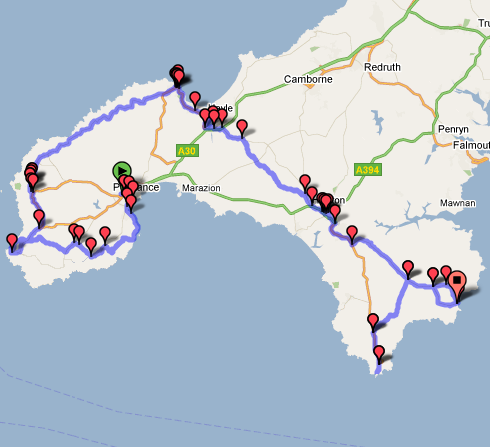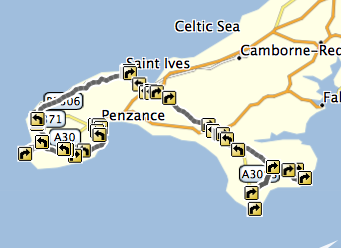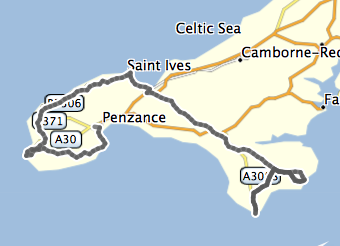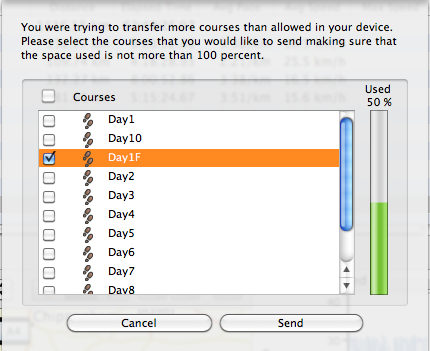The TfL cycle hire scheme has been up and running for around six weeks, and I’ve been collecting data from the TfL map for around a month – let’s have a look at it.
Here’s a graph, in ‘calendar’ format, showing how the number of bikes available to hire fluctuates each day. As use increases, fewer bikes are available to use and the line dips. Most weekdays have three narrow dips, a medium-sized one representing the morning rush hour, a small one at lunch and a large one for the evening rush hour. Weekends have a single broad dip, lasting throughout the late morning and afternoon. The Sunday dip starts slightly later than the Saturday one (maybe people have longer lie-ins on Sunday?) but apart from that the weekend pattern is broadly similar.

A more useful indicator of wherever you are going to have problems finding free or docks or bikes, is to measure how uneven the distribution of bikes is. The distribution imbalance graph describes how many bikes would need to be moved in order for every docking station to have the same proportion of bikes and spaces. A high value indicates a very skewed distribution, e.g. most central docks full and most peripheral ones empty. A low value indicates a more even flow.

The TfL distribution teams presumably work to even out the distribution except in key commuter hubs, i.e. around stations. You can see this with a gradual dip in the graph during the spell between morning and evening rush hours. There are also short-lived sharper dips at the beginning of the two main rush hours as full docks start to empty before the destination ones become completely full. Weekends generally have a more even distribution, which also changes less abruptly. An “ideal” usage of the scheme would probably have a constant and low value for the distribution imbalance.
Finally, here’s a graph which also includes rain data from the CASA weather station here in central London Aidan Slingsby’s weather station which is based just north of the hire zone. The data is a little suspect – particularly as it didn’t record any last night and I got soaked on the way home. However, apart from the last week or so, I think it is a good indication of when it was raining. The higher the blue bar, the heavier the rain.

As you would expect, rain during the three main weekday cycle usage times, or during the weekend day, tends to diminish the number of bikes being used and so increase the number available, causing the dips in red to decrease in size or disappear altogether.
Here’s one further version of the above graph, with a narrative for key cycle-related events happening in central London during the last month, which may or may not explain changes in the pattern compared to the same day of the week elsewhere in the month.











